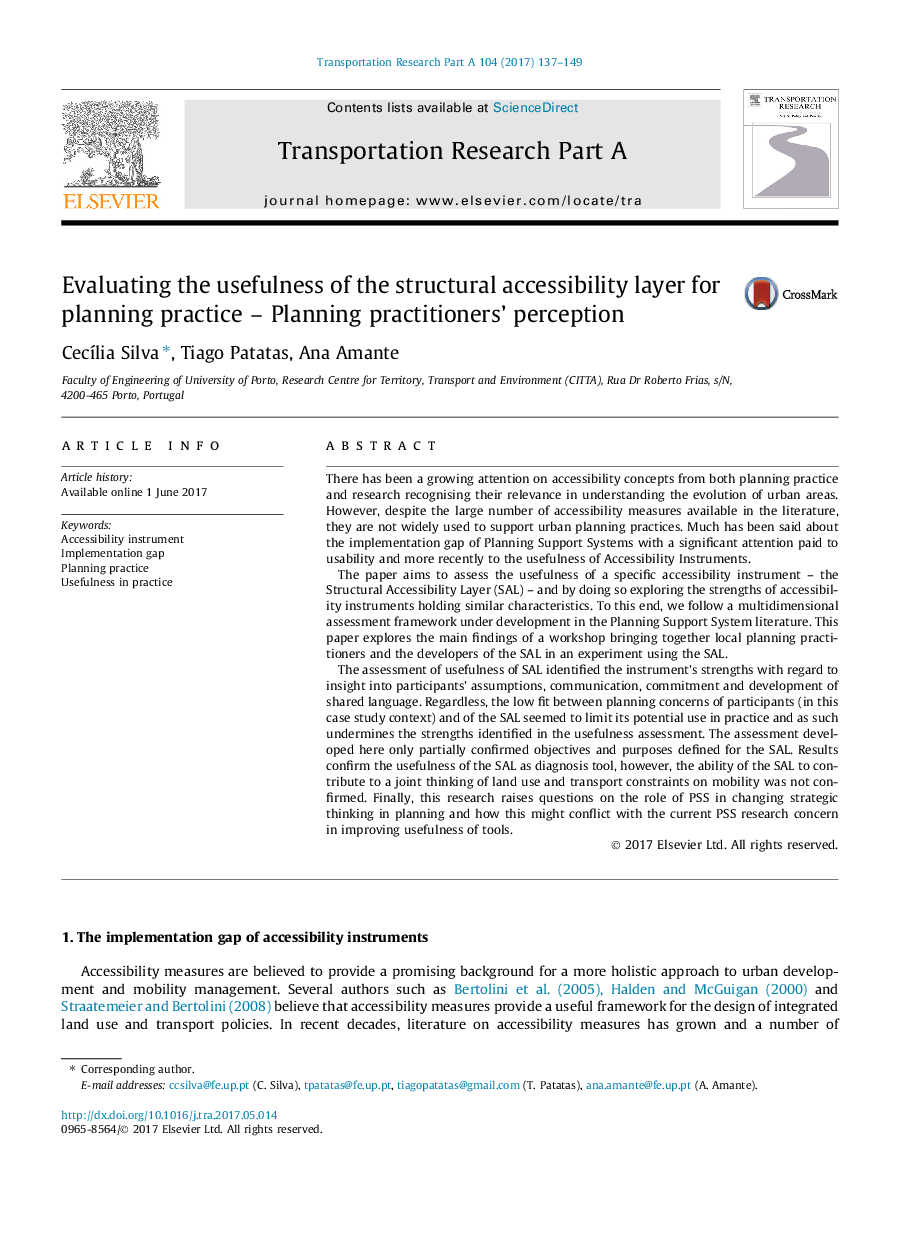| کد مقاله | کد نشریه | سال انتشار | مقاله انگلیسی | نسخه تمام متن |
|---|---|---|---|---|
| 4928872 | 1432196 | 2017 | 13 صفحه PDF | دانلود رایگان |

- Perception of the usefulness of SAL for the planning process is generally positive.
- Results confirm the usefulness of the SAL as diagnosis tool.
- SAL's contribution to a joint thinking of land use and transport was not confirmed.
- Low fit between participants' concerns and SAL's aims limited its potential use.
- Consensus on planning goals seems to play a strong role in usefulness assessment.
There has been a growing attention on accessibility concepts from both planning practice and research recognising their relevance in understanding the evolution of urban areas. However, despite the large number of accessibility measures available in the literature, they are not widely used to support urban planning practices. Much has been said about the implementation gap of Planning Support Systems with a significant attention paid to usability and more recently to the usefulness of Accessibility Instruments.The paper aims to assess the usefulness of a specific accessibility instrument - the Structural Accessibility Layer (SAL) - and by doing so exploring the strengths of accessibility instruments holding similar characteristics. To this end, we follow a multidimensional assessment framework under development in the Planning Support System literature. This paper explores the main findings of a workshop bringing together local planning practitioners and the developers of the SAL in an experiment using the SAL.The assessment of usefulness of SAL identified the instrument's strengths with regard to insight into participants' assumptions, communication, commitment and development of shared language. Regardless, the low fit between planning concerns of participants (in this case study context) and of the SAL seemed to limit its potential use in practice and as such undermines the strengths identified in the usefulness assessment. The assessment developed here only partially confirmed objectives and purposes defined for the SAL. Results confirm the usefulness of the SAL as diagnosis tool, however, the ability of the SAL to contribute to a joint thinking of land use and transport constraints on mobility was not confirmed. Finally, this research raises questions on the role of PSS in changing strategic thinking in planning and how this might conflict with the current PSS research concern in improving usefulness of tools.
Journal: Transportation Research Part A: Policy and Practice - Volume 104, October 2017, Pages 137-149